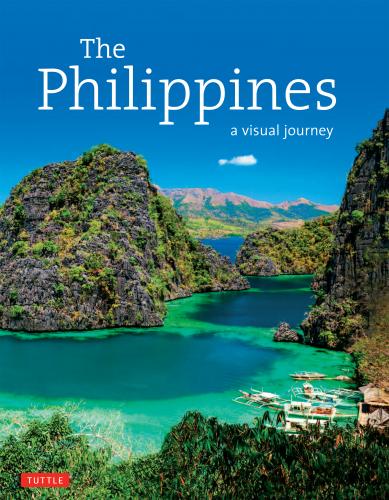Cone-shaped Mt Mayon, the main attraction and active volcano of Bicol.
Fresh catch of the day, served on Isla Naburot, Iloilo.
Civic parade passing the heavyset Basilica of Taal, Batangas.
Surfboards at sunset on the northern Ilocos coast of the big island, Luzon.
OVER THE CENTURIES, both Spain and America have colonized this fragmented archipelago and left behind their traces—in staunch Roman Catholicism, the Spanish attitude of mañana and the American-accented tongue and legislative system. Early Malay-Filipinos intermarried with Chinese and Arabs from the 10th century onwards and were colonized by the Spanish from the 16th to the 19th centuries. The Americans arrived in 1898 and occupied the islands for four decades. In 1946, after the devastation of World War II, the Philippines took its place as Asia’s first constitutional democracy. In 1986 and 2001, two popular uprisings called People Power ousted bad leaders, renewed the sense of national self and installed the best Filipinos—women—as Presidents!
meet the filipinos
They are natural musicians and Westernized Asians—a combination of dusky Malay and fiery Spanish, with a touch of Chinese and a generous topping of hip, savvy America.
fILIPINOS are playful folks with smiles, easy-going characters and personal kinship systems that keep their world going. Thespian Rolando Tinio said it best: “Like islanders everywhere in the tropics, Filipinos do tend to be quite blissful.” There are two sources of the inner strength and friendliness of the typical Filipino: a fervent belief in the goodness of God, Life and Nature, and a sense of security in and reliance on family ties and neighborhood associations. The typical Filipino is long on religiosity, family, hometown loyalty and cockeyed optimism.
Everyday street life in the district of Intramuros, which was the seat of government when the Philippines were a part of the Spanish Empire.
Young female students at “Universidad de Manila”. The main campus of this public university is at the heart of the city near the LRT Central Terminal.
Blue face paint on a brown-face windsurfer; it’s just sunblock, the bathing costume of party island Boracay. Exotic Davao beckons with a pretty face. Rice harvest in Bicol, under the gaze of Mt Mayon.
A colorful Jeepney wends its way through traffic in Makati City. Passengers can hop on and hop off anytime.
STUDIES ON FILIPINO BEHAVIOR have pointed out distinct values and patterns in Filipino society: pakikisama or getting on well with associates; utang na loob, which means a deep sense of gratitude for favors received; hiya or a strong fear of losing face; and a bahala na attitude—things will take care of themselves. Filipinos live in a modern world without being thoroughly modern. The majority are people still in the bosom of Mother Nature—noble savages, both charming and exasperating.
Proud Maranao women before a highborn household of Marawi City.
Smiling Davao girl with Mindanao dove.
A tricycle taxi, one of the most popular forms of local transport, in front of the Manila Cathedral in the Intramuros district of Manila.
Selling fresh buko juice at the Carbon Market in Cebu.
a bastion of christianity
Centuries of Spanish colonization and a native love of harvest rituals have left the country with “earthquake baroque” stone churches and a bounty of colorful fiestas.
tHE PHILIPPINES is the only predominantly Christian nation in Asia. Eighty percent Roman Catholic and traditionally pious, Filipinos live in a world of parish priests, nuns, cardinals and patron saints who are revered in households through painted wooden santos. The Virgin Mary (called Mama Mary) is the standard bearer of Filipino Catholicism around Luzon, while the Santo Niño (the Child Jesus), in ermine cloak and golden crown, is everyone’s favorite holy babe in the Visayas.
A lone padre walks the halls of ancient San Augustin Church in Intramuros.
Baguio’s pink cathedral has risen again from the ashes of the 1990 Luzon earthquake.
The Moriones Festival portrays Christ’s crucifixion by the Romans.
Mother Mary prays for us near the Bantay belltower of Vigan.
tHE LEGACY of three centuries of Spanish colonization manifests itself among the oldest Catholic churches of the country. From ancient San Agustin Church with its carved doors and Chinese fu lions to fine painted ceilings in medieval Intramuros to Ilocandia up north, where the heavyset “earthquake baroque” churches of Paoay, Santa Maria and Santa Lucia stand.
While the family kinship system binds together the country’s 81 provinces, it is Catholicism, the common religion and social glue, that underlines the lifestyle—especially at fiesta time. Secular harvest feasts merge with Christian worship as in the Feast of the Santo Nino, and the Visayans celebrate dancing fiestas such as the Ati-Atihan of Kalibo, Sinulog of Cebu and Dinagyang of Iloilo. During Eastertime or Holy Week, the island of Marinduque presents the dramatic spectacle of the Moriones Festival, reenacting the miraculous conversion of the Biblical legionnaire Longinus. Quezon’s Pahiyas or “Harvest Offering” honors San Isidro de Labrador, patron saint of farmers; homes are decorated with fruits of the harvest and colored rice wafers called kiping.
Magellan’s Cross planted Catholicism in the center of Cebu in 1517.
Blessed is the sleeping babe among the Mama Marys and Santo Niños.
Lighting votive candles in a
